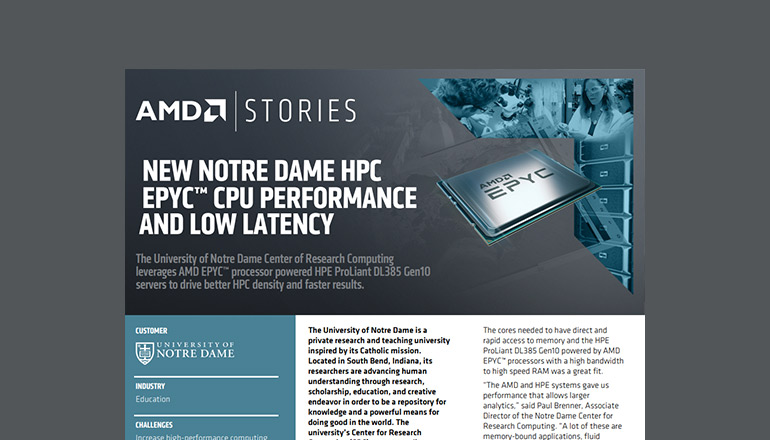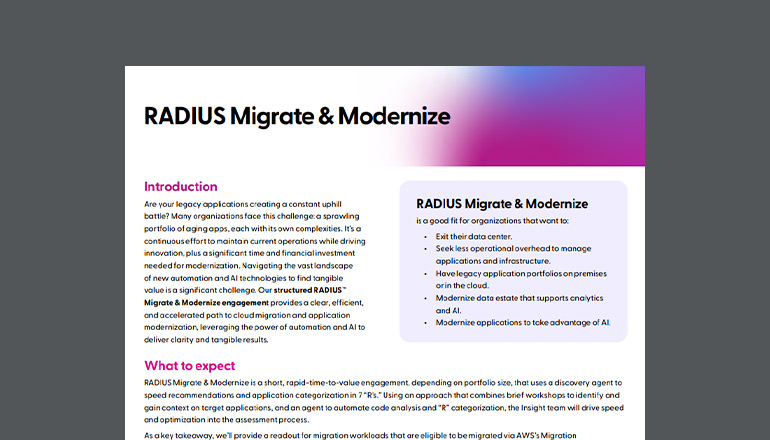Blog Why is Intelligent Edge a Top IT Trend and Why Now?
Edge processing has been around for some time now, but why has it become more relevant right now? What has changed in the landscape? This question is becoming more and more common.
By Amol Ajgaonkar / 11 Dec 2021 / Topics: Application development

Edge processing has been around for some time now, but why has it become more relevant right now? What has changed in the landscape? This question is becoming more and more common.
According to Gartner, “By 2024, more than 60% of consumer-generated data will be created and processed outside the data center or a single cloud environment.” This means that data is not only being generated by people anymore, but also by devices and processes. And with that, the amount of data that is being generated cannot feasibly be sent back to the cloud or a data center to be processed.
There is simply too much.
This is where the intelligent edge comes in. You want that computing process to be closer to where your data is actually generated. And one huge benefit of intelligent edge — across all industries — is reduced latency because you don’t have to move data from where it’s generated.
What can the intelligent edge be used for?
The use cases of intelligent edge span across nearly all industries. For example, on the manufacturing floor, you might have someone individually inspect every product that comes off your conveyor belt. With intelligent edge, you can use computer vision models to find defects in products — and your people can use their talents and experience elsewhere to provide even higher value.
Retail is also a great use case for the intelligent edge for anomaly detections at the point of sale, inventory management, supply chain logistics and more.
Likewise, healthcare organizations can reap the benefits, experiencing operational efficiencies, analyzing imaging, etc.
We’ve seen successes in other industries as well, including energy, logistics, hospitality, agriculture, mining and more.
The high-level architecture of intelligent edge
So, how does the intelligent edge work?
First, all your data is ingested into the Edge Gateway where the data is processed. From the Edge Gateway, you can integrate with other systems as well (i.e., signal tower, PLC, ERP or CRM systems). Then you’re sending only relevant, processed data back to the cloud, which reduces the impact on your network. At that point, you can process the data further, visualize it, store it or archive it.
The cloud also helps you scale these solutions. Your Edge Gateway could be deployed across hundreds of locations. How do you manage that? This is where scalability of the cloud comes: Running a well architected solution in the cloud and the edge ensures security, quick access to data, information and allows you to manage, monitor and change your workloads as your business changes.
More insight: See more intelligent edge use cases explained in this video, Democratize Edgenow.
What has changed over the years with the Intelligent Edge?
Hardware:
- Faster compute, lower cost
- “Ruggedized” for a variety of environments
- Better connectivity
- Huge sensor market
- Camera innovations for more accuracy and precision
- Hardware security modules
Software
- Digital Twins
- Clustering
- Containerization
- Secure code execution
- Remote monitoring
- Machine learning innovations
- Secure device onboarding
- Remote workload management
What does it take to use intelligent edge successfully?
We believe companies have an opportunity to digitally transform their businesses leveraging the intelligent edge — there is huge potential for what businesses can do. They can use technologies like these to successfully achieve their business outcomes while continuing to transform, improve and grow.
At Insight, the way we approach any solution is to look at what value it provides to the customer.
First, you must define your business outcome. If you don’t know why you’re doing something, you won’t experience the true value.
Once your business outcome is defined, it’s crucial to consider the following:
- People: Engage people that will be participating and be affected by the new solution and get their buy-in.
- Process: Next, define the new process and plan how devices and people will play a role in that process.
- Software: Establish a scalable solution that provides processing, trends and the right visualization for the audience based on the role.
- Security: Understand the implications of the solution on the business from a security perspective as well and implement a well-balanced security plan at all levels (hardware infrastructure, software, and support) to provide a secure solution at the right cost.
- Hardware: Create new devices or use existing ones. Configure and write the firmware.
- Deployment: Define and test the logistics of deployment and understand the cost of deployment.
- Support: Define the support strategy for solution maintenance and support for the devices and software once it is all in production.
- Gap analysis: This step is crucial to understand what components you already have in place and which ones you may need to integrate. And for those you do have, make sure they’re secure and scalable before moving forward.
How can you get started with intelligent edge?
Once you understand your business outcome and have established the backlog of features you want to implement, assign a priority to all use cases to find what will provide the maximum impact to your organization right now.
Next, implement the use case with the above considerations, build the next priority use case and repeat the process. Focus on building the foundation and framework needed to provide consistency across solutions/use cases and the organization.
We truly believe that intelligent edge can have a massive impact on businesses.




